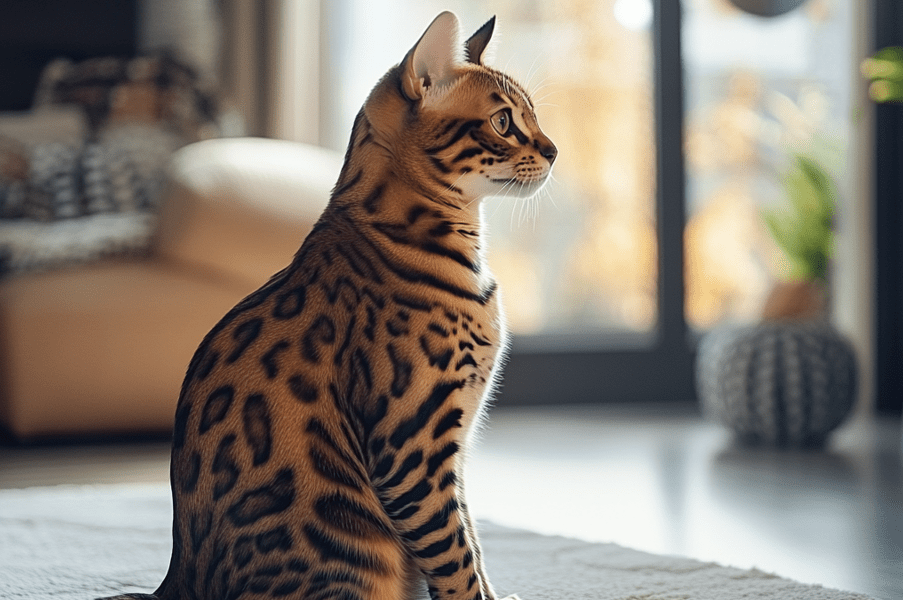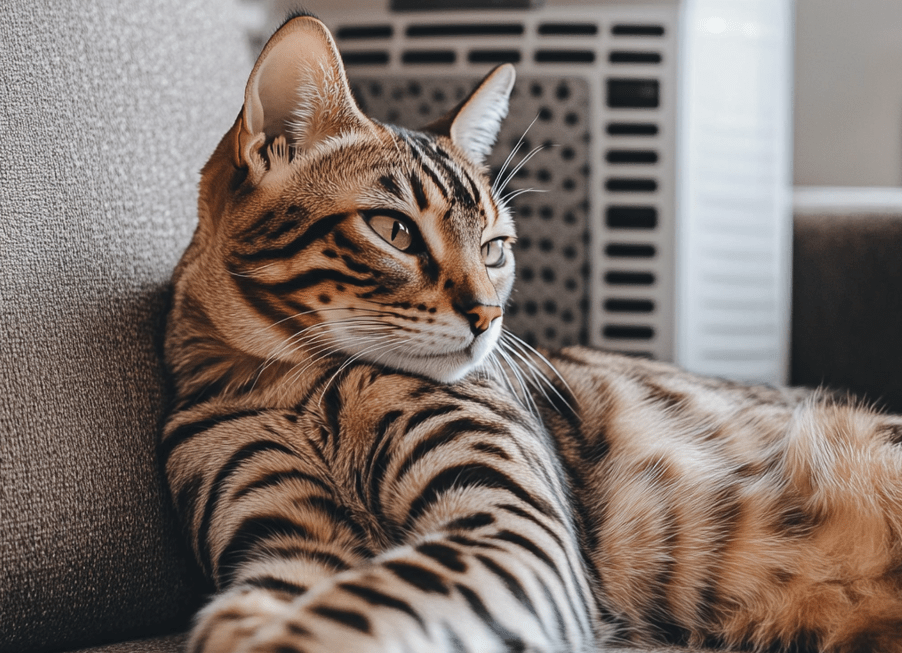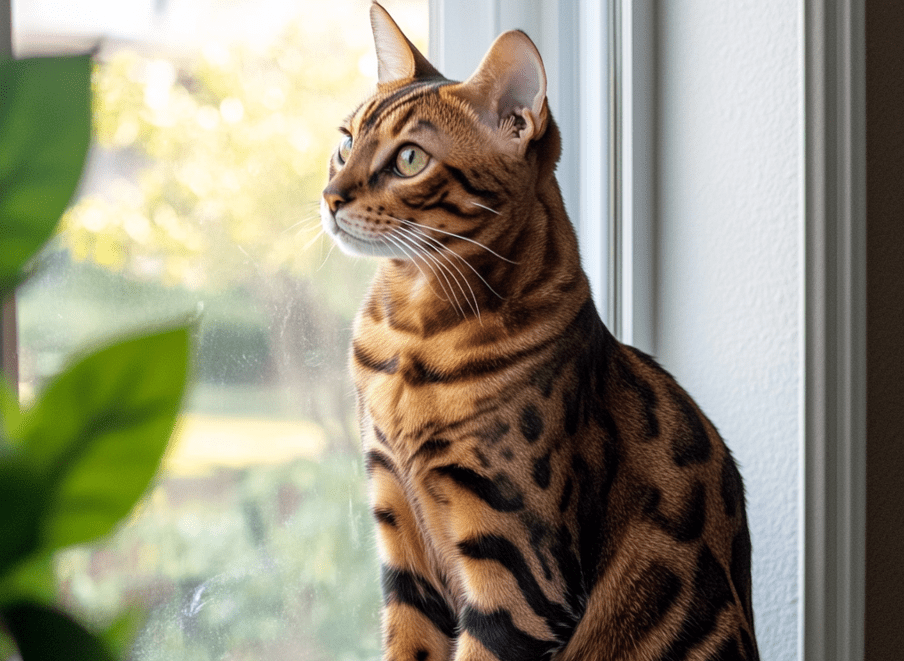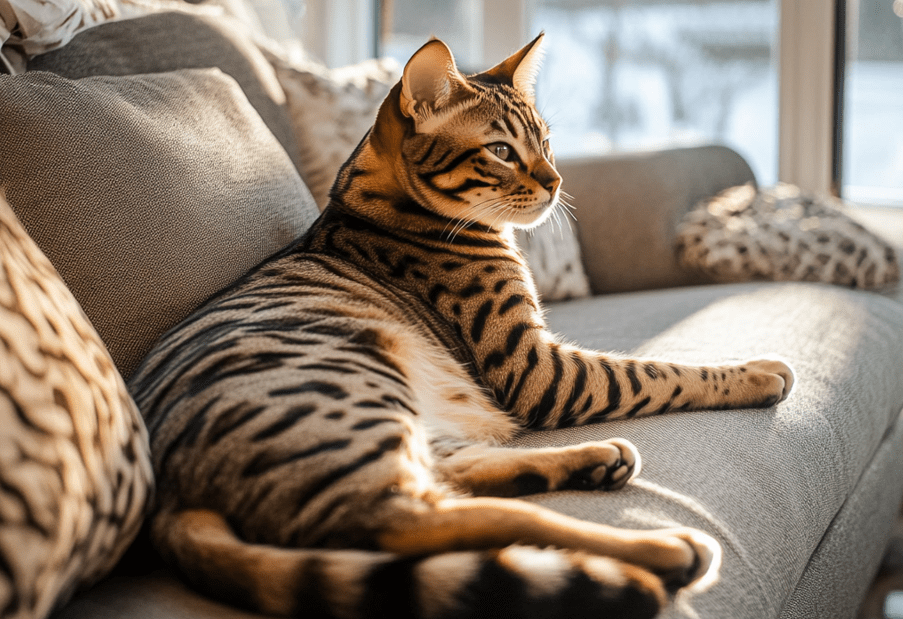
Bengal cats are banned or restricted in some places due to their hybrid status, created from crossing domestic cats with the Asian leopard cat (Prionailurus bengalensis).
Bengal cats are a fascinating breed that look like wild cats but have the personality of house cats. Owning a Bengal cat is banned or restricted in some areas. Why are Bengal cats illegal in these countries, and what do you need to know if you are considering taking one home?
The reasons for these legal restrictions are different in every region. In some regions, the concern is based on the view that Bengal cats are too wild (and therefore aggressive or invasive) to be kept as pets. In others, regulations seek to safeguard the endangered wildlife that helped create the Bengal breed.
The Legality of Bengal Cats in Different Countries
If you have dreams of Bengal cats, you may be wondering where they can be owned legally. It depends on the laws of each country or area. Such laws typically address worries over the breed’s temperament, environmental effects, or the conservation of wildlife from which it comes.

Bengal Cats in the United States
Bengal cats are popular in the United States, but each state (sometimes even city) has their own rules and regulations.
States Where Bengal Cats Are Fully Banned:
States like California, Hawaii, Georgia, and Massachusetts outright ban Bengal cats.
States with Conditional Ownership:
states such as New York, Texas, and Illinois allow the Bengal cat ownership with certain restrictions such as permits or generation.
States with No Specific Laws:
These include states such as Florida, Nevada and Arizona, which have no specific laws against Bengal cats, but are likely to fall under some general exotic animal laws.
Before adopting a Bengal cat in the US, you will want to do plenty of research. Review local laws and work within them. You may also face difficulties, such as finding an exotic veterinarian who knows Bengal cats, potential legal problems, and the fact that some people do not like the idea of owning a pet with an exotic appearance.
Restrictions on Bengal Cats in Other Countries
Bengal cat legal status differs across the world based on local lifestyles, wildlife interaction systems, and potential ecological hazards. Below are a few examples:
Canada:
Most provinces, with the exception of Alberta, where Bengals are banned. Bengal cats must be registered or microchipped in Ontario and Quebec.
United Kingdom:
Bengal cats are permitted if they are four generations removed from their wild ancestors. Those cats that are closest to their wild ancestry are considered to be wild animals and possess an illegal status for ownership.
Australia:
It’s legal to keep Bengal cats in most Australian states, but they are banned in Queensland. In areas such as New South Wales and Victoria, Bengals are required to be spayed or neutered.
New Zealand:
Bengals are legal if they’re at least five generations away from wild ancestors. Cats that are more closely related to their wild ancestors are not allowed.
The following list summarizes the remarkable variation and intricateness of Bengal cat legislation around the world. If you are considering adopting one in a foreign country, It’s important to familiarize yourself with the local laws.
The Difficulty of Owning a Bengal Cat Overseas
If you are considering bringing a Bengal cat to your home country, some factors included reliable breeders, international transportation issues as well as how well the breed as a whole fits with the climate or environment system.
So understanding these legal and logistical requirements will be crucial to both a successful experience and giving your Bengal cat a safe and suitable home.
Why Are Bengal Cats Banned or Restricted in Some Areas?
Some areas have bans or restrictions on Bengal cats due to legal, environmental, and ethical concerns. Here are top facts about Bengal cats that make them restricted as pets in some regions.
Wildlife Conservation

Bengal cats originated from the hybridization of domestic cats and Asian leopard cats, a wildly endangered species. Some of those places are worried Bengal cats could crossbreed with wild cats, compromising their survival by diminishing genetic diversity. They also fear that Bengal cats would compete with wild cats for food and space or spread diseases to them.
Keeping People Safe
Bengal cats are considered too wild or unpredictable to be good pets in some locations. They worry the cats could act aggressively or injure people and other animals. Bengals might also not be suitable if they are too vocal, destructive or territorial.
Caring for the Cats
Since Bengal cats are hybrids, they can present as well with health and behavior problems. They may also be affected by genetic diseases or have predispositions to certain diseases. Some municipalities do it to prevent breeders or owners from abusing or taking advantage of the cats.
Other Reasons
Laws on Bengal cats can also be influenced by cultural traditions or political or economic considerations. Not all of these rules are necessarily based on science or ethics; some will fluctuate with changes in public opinion or policy.
How to Know if Adopting a Bengal Cat Is Right for You
It’s easy to fall in love with the Bengal cat’s exotic appeal, but before making one yours, you must ensure that the Bengals is legal in your area. Bengal cats are special and are not allowed everywhere. Here’s how to tell if Bengal ownership is legal in your country and what permits or licenses you will need:
Do Extensive Research Before Adoption
It is important that you learn about the breed before bringing a Bengal cat into your home. Read on to learn more about their background, physical characteristics, temperament, and health issues, and care needs. Bengals need a home that physically, mentally and emotionally works for them. Make sure you can give her such an environment.
Check the legality of Bengal cats in your area and ask why they are restricted. Get to know the ownership laws, the risks or challenges, etc. Breaking these laws could result in penalties like fines, loss of your pet or even legal issues. You will have to be prepared to deal with potential disputes with neighbors, landlords, and local authorities relating to your Bengal cat.
Researching Local Laws on Bengal Cats
Rules on owning Bengal cats can be complicated as these laws differ by country, state or municipality and are subject to change over time.
Online Resources
There are some online resources like Bengal Cat World or Bengal Cat Legal Status that can provide the same information about the legality of Bengal cats in various areas. Unfortunately these resources are not necessarily current or entirely accurate. Check official sources for the information.
Consult Official Authorities
The local authorities are the best source of information in confirming local regulations. Contact animal control departments, wildlife or environmental agencies, or your local government office. These organizations have this data and can inform about which permits or licenses you need if any.
Get Advice from the Owners and Breeders
Reputable Bengal cat breeders and experienced owners are also great resources. They usually have direct experience of the legalities and difficulties involved in a Bengal cat ownership. Reach out and engage with them on social media, forums, via a website or through local clubs and events.
Ask breeders and owners about local laws, any permits required, and tips for responsible Bengal cat ownership. They might also share advice on managing potential challenges and encouraging amicable relationships with neighbors and community members.
While owning a Bengal cat is a fulfilling experience, it is also a huge responsibility. By doing your research and ensuring that you are abiding by local laws, you’ll be able to provide a safe, happy and legal home for your new feline friend.
Requirements for Getting a Permit or License for a Bengal Cat
As mentioned previously, if Bengal ownership is allowed in your area, but a permit or license is required, you will need to follow the guidelines and procedures provided by your local authorities. While specific requirements may vary by state or location, the key processes typically include:
Application Process
Fill out an application form, which usually requires:
1.Your personal details.
2.Bengal cat facts or Information on Bengal cats.
3.The reasons why you choose a Bengal cat.
You may also be required to submit supporting documents, including a copy of your identification, proof of residence (a utility bill), and proof of your cat’s purchase or ownership.
Fee Payment
A fee will need to be paid to cover the processing of your application, issuing of the permit or license, and inspecting your Bengal cat, and its living space. Fees generally run between $50 and $500, depending on where you live.
Inspection Requirements
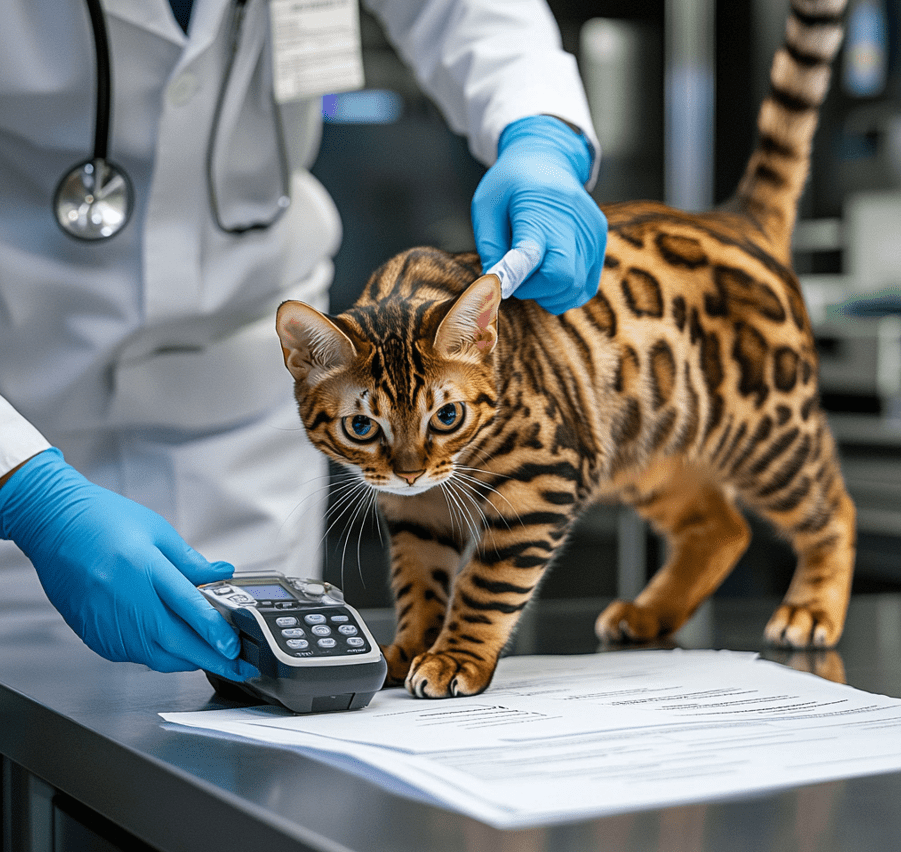
Inspectors may visit to ensure compliance with certain standards. These often include:
Generation: Your Bengal cat must be at least four or five generations removed from its wild ancestor. In other words, your Bengal must have a domestic cat as a great-great-grandparent or great-great-great-grandparent.
Identification: The cat must have a microchip, tattoo or collar, according to local laws. This aids in keeping your cat properly identified in case they escape or get lost.
Sterilization: A Bengal cat would need to be spayed or neutered to prevent unwanted breeding, to check overpopulation and to prevent hereditary health problems.
Vaccination: This is frequently necessary for rabies, feline leukemia, feline immunodeficiency virus and other infectious diseases to help protect your cat, others and the community from possible disease.
Enclosure Requirements: The cat must be kept in an escape-proof and acceptable enclosure. The enclosure needs to be large enough, clean, and have enrichment to ensure the cat’s well-being.
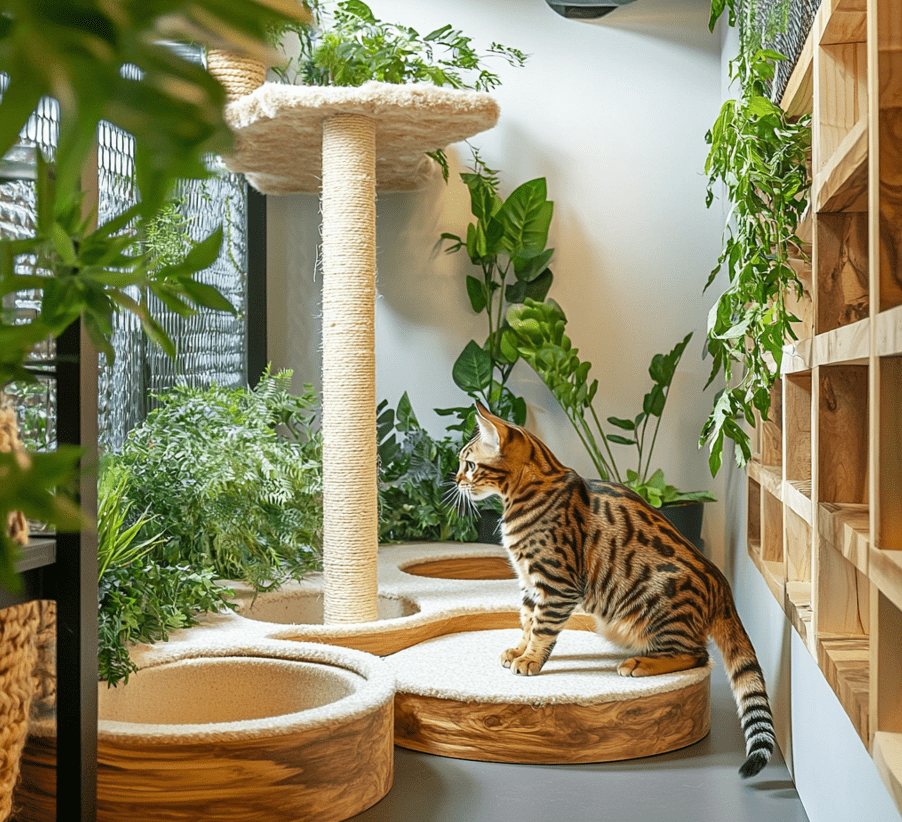
Approval and Documentation
If your application is approved, you will be issued a permit or license that will serve as a certificate, tag or sticker that identifies your cat as being legal and registered. This permit or license may be for a specified length of time.
It is essential to:
1.Make sure that your permit or license and identification documents are accessible.
2.Show these documents to authorities if asked.
3.These requirements allow you to keep a Bengal cat legally and responsibly.
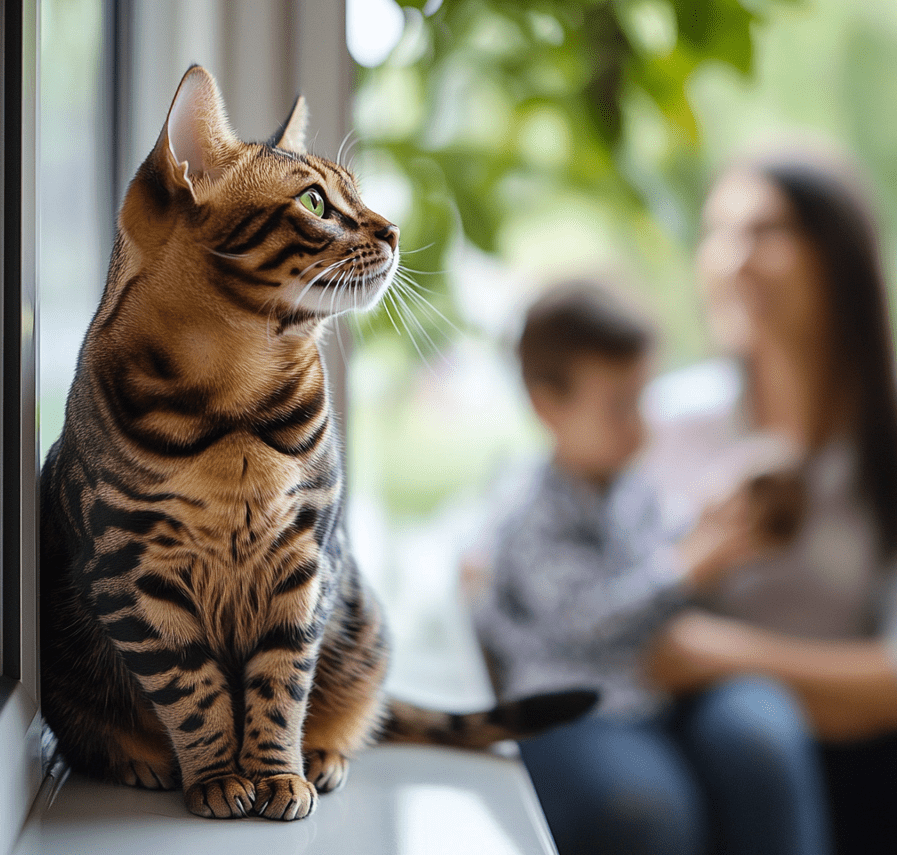
Bengal cats are exciting companion animals however, they also require a great deal of responsibility. Because of their unique background, these animals are often subject to legal restrictions, and it’s important to look up local laws before adopting one. It’s important that we comprehend their needs, making sure to give them a secure, loving home. Seek guidance from local authorities, good breeders and experienced owners to have all the information needed. However, if you follow the rules and get yourself correctly prepared, you can enjoy all the beauty and charm of this fabulous breed while keeping your cat happy, healthy, and protected from the law.

